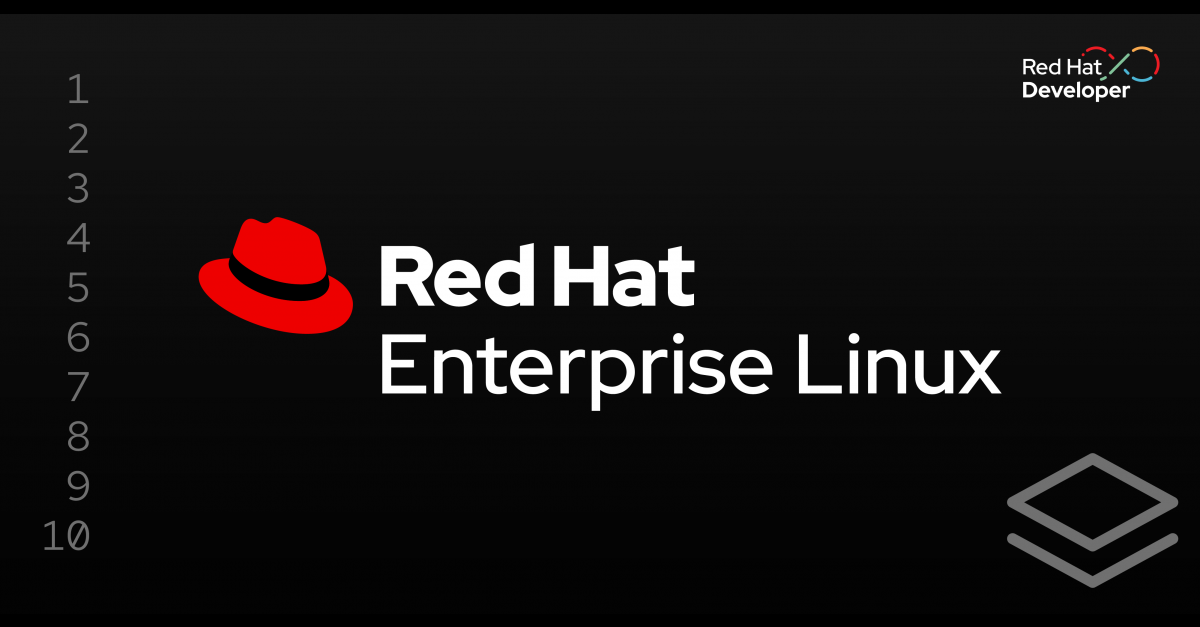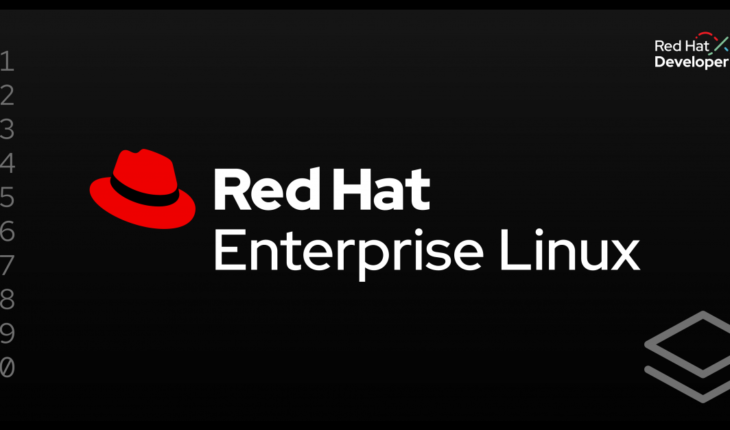
Red Hat Enterprise Linux (RHEL) 9.5 is now generally available (GA). This latest release simplifies complexities and lets developers focus more on building applications. It also provides a platform for faster and more efficient development of critical workloads with a consistent experience across physical, virtual, private, public cloud, and edge deployments.
You can download RHEL 9.5 at no cost as part of the Red Hat Developer program subscription.
In this article, you’ll learn about enhancements in RHEL 9.5 that improve the developer experience.
Latest language runtimes, databases, and tools
Red Hat Enterprise Linux 9.5 has been updated with many developers’ favorite programming languages and databases. Notable changes include:
- PostgreSQL 16 with pgvector extension: RHEL 9.5 provides a PG vector (pgvector extension) in the release. This extension enables efficient running of the AI workloads and tasks on the PostgreSQL database.
- Node.js 22 is a new version added to the application stream and is part of Red Hat Enterprise Linux 9.5. Key enhancements in Node.js 22 include V8 JavaScript engine upgraded to v12.4.
- JDK 17: The system default of Java JDK will change to the latest version, JDK 17. This will be default in RHEL 9.5. JDK 11 will be available in RHEL 9 for users who wish to remain on the older version.
- HTTPD 2.4.62 is the latest version available in Red Hat Enterprise Linux 9.5. Key enhancements include:
LDAPConnectionPoolTTLdirective now accepts negative values to allow reusing connections of any age. This mitigates previously generated errors in mod_ldap module when the config file is parsed with negative values.- Usage of the
-Toption allows truncating the subsequent roasted log files without the initial log file being truncated in the rotate logs binary. - Support for Secure Socket Layer (SSL) version 3 allows the MariaDB server to correctly configure SSL to start.
- .NET 9 release updates the SDK to C# 13 and F# 8, adds built-in support for OpenAPI document generation, performance improvements, ans enhanced JSON support.
The latest versions of toolsets and compilers
Red Hat Enterprise Linux 9.3 offers updated versions of Rust 1.79, GCC 14, LLVM 18, and Go 1.22, enabling developers to accelerate innovation, streamline operations, and modernize their applications with the latest toolsets and compilers.
Rust 1.79
Red Hat Enterprise Linux 9.5 comes with Rust 1.79. The changes are related to:
- Support for stable inline
constexpressions. The inlineconstexpressions permit explicitly entering a const context without requiring extra declarations. - Support for bounds in associated type position. This allows developers to put bounds in association-type positions within other bounds.
- Improved automatic temporary lifetime extension. Temporaries are now automatically lifetime extended in
matchandifconstructs. - Debug assertions for unsafe preconditions.
Find out more about Rust 1.79.
GCC 14
Red Hat Enterprise Linux 9.5 comes with GCC-toolset 14, based on newly released GCC 14 compilers. Notable enhancements include the following:
binutilstools support architecture extensions in the 64-bit Intel and ARM architectures.- The linker script syntax has a new command for output sections,
asciz, which inserts a zero-terminated string at the current location. - GCC 14 now supports many C23 features and C++26 features from the C family. Learn more: GCC 14 Release Series Changes, New Features, and Fixes
Find out more about C and C++ on RHEL.
LLVM 18
Red Hat Enterprise Linux 9.5 comes with LLVM 18.1.8. Notable changes include:
- The
code_modelattribute for global variables has been added. - The back end for the AArch64, AMDGPU, PowerPC, RISC-V, IBM system z, and x86 architectures has been improved.
- The
llvm.exp10intrinsic has been added. - LLD, a linker from LLVM, has been added to support s390x. This support enables reuse of both the implementations of LLVM support for s390x and LLD support of ELF files, making development easier. Learn more: Adding support for s390x in LLD, the LLVM linker
Find out more about LLVM 18.
Go 1.22
Red Hat Enterprise Linux 9.5 comes with Go 1.22. Notable changes include the following:
- Variables in
forloops are now created per iteration, preventing accidental sharing bugs. Additionally,forloops can now range over integers. - Workspace commands can now use a vendor directory for the dependencies required for running the workspace.
- The
go getcommand no longer supports the legacy GOPATH mode. This change does not affect thego buildandgo testcommands. - Go now provides improved inlining optimizations and better profile-guided optimization support for higher performance.
Find out more about Go 1.22.
Security and compliance
Red Hat Enterprise Linux 9.5 GA gives users better control over security policies while deploying new systems or managing existing infrastructure. Notable changes include:.
- Custom key sizes in
ssh-keygen: Users can configure the size of keys by setting environment variablesSSH_RSA_BITSandSSH_ECDSA_BITSin/etc/sysconfig/sshd. - Pre-hardened RHEL image configuration can be done via image-builder. This streamlines the deployment process, making users Zero Trust experts.
- The selinux-policy. Git repo for CentOS Stream 10 is now publicly available. This allows CentOS Stream contributors to participate in developing the SELinux policy.
- Additional support for confidential computing enables data protection for AI workload development. This keeps AI workload data separate from operating system data, allowing enterprises to leverage AI with proper segmentation.
Read more about Red Hat Enterprise Linux security
Red Hat Enterprise Linux workloads
Red Hat Enterprise Linux 9.5 supports a growing infrastructure and is scalable and flexible, allowing customers to add services and expand. Notable enhancements in 9.5 for workloads include:
- SAP HANA index server crash: The RHEL 9.5 release supports detecting SAP HANA index server failure during scale-out and scale-in DBMS clusters and automates the switch over to the secondary SAP HANA node.
- RHEL HA cluster health check for SAP: RHEL 9.5 provides a tool to identify potential issues with the RHEL HA cluster environment running SAP HANA or S/4HANA applications. Users can proactively run the tool to identify and fix issues in a timebound manner. This tool is in tech preview.
- RHEL High Availability on Azure Government Cloud enables RHEL HA to run SAP and other workloads. This allows customers to use RHEL HA in an environment that meets the compliance and security standards mandated by the US government for sensitive data.
Red Hat Enterprise Linux for containers
Red Hat Enterprise Linux 9.5 introduces significant updates relaed to container management and security. Notable changes include the following.
- Podman 5.0. This version comes with notable enhancements:
- An option to disable the Podman
healthcheck_eventsoption in the configuration file, to disable the generation ofhealth_statusevents. - Full support for creating multi-architecture container images using the
podman farmbuild command. - The ability to automatically generate a systemd service file using Quadlet from a pod description.
- A new API endpoint,
/libpod/images/$name/resolve, has been added to resolve a potential short name to a list of fully qualified image references Podman, which can be used to pull the image. - Support for pushing and pulling images compressed with
zstd:chunked.
- An option to disable the Podman
- Image mode for RHEL now supports FIPS mode. With this enhancement, users can enable the FIPS mode when building a bootc image to configure the system to use only FIPS-approved modules.
- Image mode for RHEL now supports logically bound app images. With this enhancement, users can manage multiple container images for system installation which helps unite different operational processes for applications and operating systems.
- RHEL 10 beta is now available. The real-time
registry.redhat.io/rhel10-beta/rtevalcontainer image is now available in the Red Hat Container Registry to run latency analysis on a standalone RHEL installation. This will help users verify the viability of the containerized setup against the bare-metal run of rteval. Read more about RHEL 10 beta here. - bootc-image-builder now supports defining and injecting custom kickstart files into the ISO builds. With this enhancement, users can specify a kickstart by setting users, customizing partitioning, injecting the key, and injecting the kickstart file to an ISO build to configure the installation process. This creates a self-contained installer that automates and deploys devices.
Identity Management (IdM) in Red Hat Enterprise Linux
Red Hat Enterprise Linux 9.5 has new features and enhancements in Identity Management (IdM). Some notable features include:
- The
python-jwcryptopackage has been updated to version 1.5.6. This version provides a security fix to an issue where an attacker could cause a denial of service attack by passing in a malicious JWE Token with a high compression ratio. - The IdM now supports IdM-to-IdM migration. Users can use the new
ipa-migratecommand to migrate all IdM-specific data. This can be useful when migrating IdM data from development or staging environments to production environments. - The
ansible-freeipapackage has been updated to 1.13.2. Notable enhancements include:- Dynamically create an inventory of Identity Management (IdM) servers for
ansible-freeipaplaybooks. - Run
ansible-freeipaplaybooks that use a single Ansible task to add, modify, and delete multiple Identity Management (IdM) users, user groups, hosts, and services with a single API call. Previously, each of the tasks had its own dedicated API call.
- Dynamically create an inventory of Identity Management (IdM) servers for
Red Hat Enterprise Linux system roles
Red Hat Enterprise Linux 9.5 brings new features for system roles as described below.
- Support for a new
ha_clustersystem roles:- Configuring utilization attributes for node and primitive resources.
- Configuring node addresses and SBD options by using the
ha_cluster_node_optionsvariable. If bothha_cluster_node_optionsandha_clustervariables are defined, their values are merged, with values fromha_cluster_node_optionshaving precedence.
- Support for configuring the GFS2 file system using RHEL system roles. This role requires minimum information to configure GFS2 file systems in RHEL HA clusters. This role performs the following tasks:
- Setting up the
dlmandlvmlockdcluster resources. - Creating the LVM volume groups and logical volumes required by the GFS2 file system.
- Creating the GFS2 file system and cluster resources with the necessary resource constraints.
- Setting up the
- Storage role support for Stratis pools. This enhancement adds a new functionality within the storage RHEL system role to automate the configuration of Stratis storage. Previously, the storage RHEL system role did not support configuring Stratis storage. The storage RHEL system role completes the following tasks:
- Create a new encrypted and unencrypted Stratis pool.
- Add new volumes to the existing Stratis pool.
- Add new disks to the Stratis pool.
- Create fingerprints on managed nodes within the cluster. This helps users to track which nodes are managed by storage.
Read more about Red Hat Enterprise Linux system roles.





